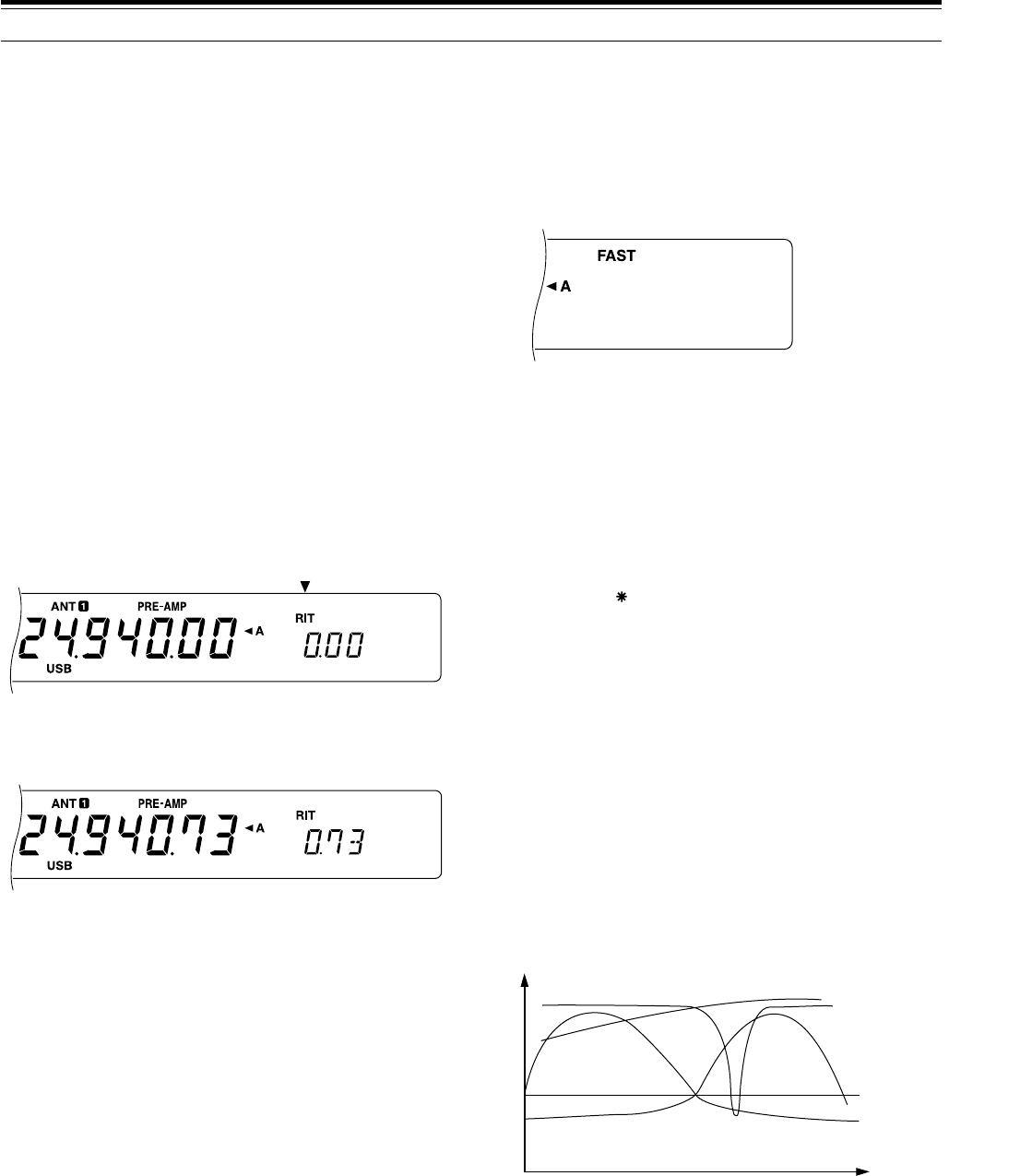
30
8 COMMUNICATING AIDS
■ Equalizing VFO Frequencies (A=B)
This function allows you to copy the frequency and
modulation mode of the active VFO to the inactive
VFO.
1 Select the frequency and mode on VFO A or
VFOB.
2 Press [A=B].
• The frequency and mode selected in step 1 are
copied to the inactive VFO.
3 Press [A/B] if you want to confirm that the
frequency was copied.
RIT (RECEIVE INCREMENTAL TUNING)
RIT provides the ability to change your receive frequency
by ±9.99 kHz in steps of 10 Hz without changing your
transmit frequency. If the Fine Tuning ([FINE]) function is
ON, the step size is 1 Hz. RIT works equally well with all
modulation modes and while using VFO mode or
Memory Recall mode.
1 Press [RIT].
• “RIT” and the RIT offset appear.
2 If required, press [CLEAR] to reset the RIT offset to 0.
3 Turn the RIT/XIT control to change your receive
frequency.
4 To cancel RIT, press [RIT].
• The receive frequency is returned to the frequency
that was selected prior to step 1.
Note:
◆
When using Memory Recall, RIT only functions with a memory that
contains stored data.
◆
The frequency shift set by the
RIT/XIT
control is also used by the
XIT function. Therefore, changing or clearing the RIT offset also
affects the XIT offset.
AGC (AUTOMATIC GAIN CONTROL)
When using modes other than FM, AGC selects the time
constant for the automatic gain control circuit.
Selecting a slow time constant will cause the receiver
gain and S-meter readings to react slowly to large input
changes. A fast time constant causes the receiver gain
and the S-meter to react quickly to changes in the input
signal. A fast AGC setting is particularly useful in the
following situations:
•Tuning rapidly
• Receiving weak signals
• Receiving high-speed CW
The default time constant is slow for SSB, fast for CW,
fast for FSK, and slow for AM.
1 Assume that USB is currently selected.
2 Press [AGC/TONE].
•“FAST” appears and shows that a fast time
constant is selected.
3 To select a slow time constant, press [AGC/TONE]
again.
RX EQUALIZER
RX Equalizer changes the receive frequency
characteristics so that you can listen to received signals
with the most comfort. Use Menu No. 50 to select from
five different receive profiles including the default flat
response. Selecting any of the following items from the
Menu causes “ ” to appear beside the Menu No.
• High boost (Hb):
Emphasizes higher audio frequencies; effective for a
bassy voice.
• Formant pass (FP):
Improves clarity by suppressing audio frequencies
outside the normal voice frequency range.
• Bass boost (bb):
Emphasizes lower audio frequencies; effective for a
voice with more high frequency components.
• Conventional (c):
Emphasizes by 3 dB frequencies at 600 Hz and
higher.
Note:
◆
“U” selectable in Menu No. 50 is not currently available. The
menu includes this selection because of a possible future
enhancement.
◆
The figure above is given for your better comprehension. The
actual profiles will be affected by factors such as the receive IF
filters.
0.7
2.2
Amplitude
Audio
frequency
(kHz)
Bass boost
High boost
Off
Conventional
Formant pass


















